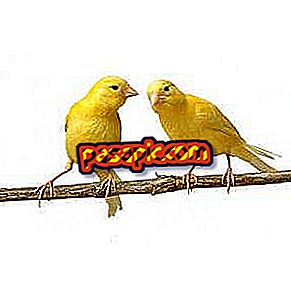How animals move

Animals move in multiple ways . They jump, run, swim or fly, making characteristic movements that allow them to move in their own environment and also occasionally venture into the other environments for which they are not adapted. This is how it is possible to observe fish that are able to fly or climb tree trunks, swimming and diving birds, and terrestrial mammals that have achieved a remarkable mastery of the planned flight. In this article we will explain how animals move and move .
How birds fly
Insects and flying birds flap their wings to sustain themselves in the air and move their bodies forward. Both are equipped with ingenious mechanisms for flight: the former have rockers that act as a kind of gyro to ensure direction, while in birds are the semi-circular channels of their inner ear the organs responsible for the sense of balance and the orientation. The flying fish move out of the water driven by their caudal fin and are held in the air by means of the pectoral fins deployed, being able to glide and fly 300 meters.

How animals move in the water
The creatures that live in the sea, oceans, rivers move around practicing a great variety of movements. Among the best known is the wave movement of the vertical tail of the fish (caudal fin), which acts as a true propeller propeller. The ciliary movement is used by many protozoa, which wave their filaments (cilia) as if they were oars. Reaction propulsion, whose use in modern technology is widely disseminated, recognizes its natural antecedent in the movement of jellyfish and octopi, which are driven by violently throwing water under their bodies. Other types of movements are known that are made to move the inhabitants of the aquatic environment, such as the wave of the eels, the rowing propulsion used by turtles and palm-backed birds and the characteristic of the hippocampus, produced by the ripple of its dorsal fin.

How reptiles move
The reptiles raptan, that is to say, they move crawling on the ground. Not only do those who do not have legs, such as snakes, but also other reptiles. The lizard, like other saurians, advances by leaning on its short limbs and waving the muscles of the trunk. The earthworm advances by shrinking and lengthening the anterior part of its body.

How mammals move
Most mammals have four legs and travel by land, however, some use other ways to move. Aquatic mammals such as seals or whales and dolphins swim by fins. Bats fly through their forelimbs, which are fins. The monkeys use their hind legs and their hands. Some can do it upright. Humans are bipedal and move by walking or running in their two lower extremities.



